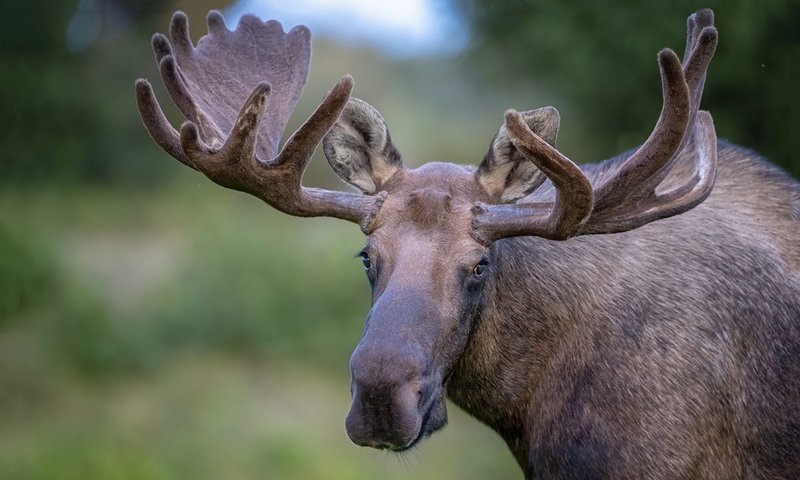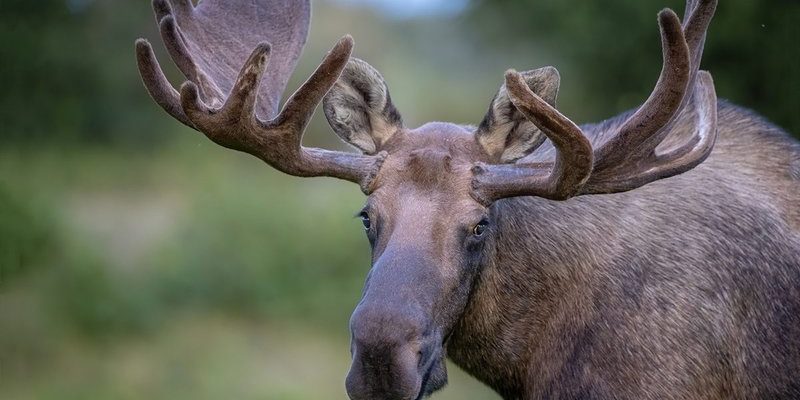
Picture this: You’re sipping coffee with a friend, and the topic of moose comes up. You mention how graceful they are while swimming, and your friend looks bewildered. “Really? I thought they were clumsy!” That’s the kind of myth we’re looking to unpack. Let’s dive into the world of these majestic animals, clear up some confusion, and help you appreciate moose for what they truly are.
Myth 1: Moose Are Aggressive Creatures
One common misconception is that moose are inherently aggressive. People often think of them as the bullies of the forest, ready to charge at anyone who gets too close. Here’s the thing: while moose can be dangerous if they feel threatened, they are not naturally aggressive animals.
Moose are generally shy and tend to avoid humans when possible. In fact, they usually only display aggression during mating season or if a cow is with her calves. When provoked or cornered, they may charge, but this is a defensive response, not a sign of innate aggression. Imagine you’re at a party and someone invades your personal space—your reaction is likely to be defensive too, right?
If you ever encounter a moose in the wild, the best thing to do is to keep your distance and respect their space. They’re not out to get you; they just want to enjoy a peaceful existence away from prying eyes.
Myth 2: Moose Can’t Swim
You might be surprised to learn that moose are actually excellent swimmers, contrary to what some may think. In fact, they’re quite the water enthusiasts! These massive animals can swim for long distances, often over several miles at a time. Their long legs and buoyant bodies help them navigate through water with surprising grace.
Moose swim to find food, escape predators, and sometimes just for fun. They often dive underwater to reach aquatic plants, using their long necks to forage below the surface. Just picture a moose gracefully paddling through a lake, its antlers slicing through the water like a natural paddle. It’s a sight to behold and a reminder that these creatures are more versatile than they might seem.
If you ever visit a moose’s habitat, you might spot them wading into lakes or rivers, showcasing their swimming prowess. So, the next time someone says moose can’t swim, you can confidently correct them!
Myth 3: Moose Are Just Big Deer
It’s easy to lump moose in with deer due to their similar body shapes, but they are, in fact, quite different. Here’s a fun fact: moose belong to the Cervidae family, like deer, but they are the largest species in this group. While they share some traits, moose have unique characteristics that set them apart.
For starters, moose have a distinct, elongated face and long legs, giving them a different appearance than the average deer. Their hulking size—adult males can weigh over 1,000 pounds—definitely contributes to their uniqueness. Just think of the difference between a Great Dane and a Chihuahua!
Additionally, moose have a large, fleshy “bell” or dewlap that hangs under their throat, which is not found in other deer species. This feature becomes more pronounced during the mating season, and it’s a fascinating aspect of their anatomy that underscores their individuality.
Myth 4: Moose Are Solitary Creatures
While moose are often seen alone, especially outside of mating season, it’s a myth that they are strictly solitary creatures. In reality, they can form social groups, particularly during the summer when females and their calves might gather in certain areas where food is abundant.
These groups are often temporary, and individual moose will typically go their separate ways as the seasons change. However, during the mating season, males can be found competing for the attention of females, showcasing their impressive antlers and vocal calls. Picture a group of males strutting their stuff, trying to win over a mate—it’s a fascinating social dynamic!
So, while a moose sighting might often include just one animal, don’t be surprised if you come across a small group, especially during summer months. They have their own social life, after all!
Myth 5: Moose Have No Natural Predators
It might seem like moose, being so large, would have no natural predators in the wild. However, this is another myth that needs debunking. While it’s true that their size makes them less susceptible to many predators, they are not without threats. Wolves and bears are among the most notable natural predators of moose.
Young calves, in particular, are vulnerable to predation. Wolves often target these younger, weaker moose, especially if they are separated from their mothers. It’s a harsh reality of the natural world, but it’s an essential part of maintaining the ecosystem. Just like in any good story, there are heroes and villains, and moose have their share of challenges to face.
In areas where populations of wolves and bears are healthy, you might see a natural balance maintained in the moose population. So while they’re tough animals, they’re not invincible—much like any of us in the wild.
Myth 6: All Moose Have Antlers
What’s one of the first things that come to mind when you think of a moose? Those impressive antlers! But here’s an interesting fact: not all moose have antlers. Female moose, known as cows, do not grow antlers at all. Only males, or bulls, develop this characteristic.
The antlers of a bull moose are not just for show; they play a crucial role during mating season. Males use them to compete with one another for the attention of females, engaging in thrilling displays of strength. It’s a bit like a game of chess, where the stakes are high, and the winner gains the right to mate.
So, if you ever see a lone cow moose without antlers, don’t be surprised! It’s all part of nature’s design and serves a purpose in the way moose interact with one another.
Myth 7: Moose Only Live in Cold Climates
You might think that moose are creatures of the cold, only found in snowy landscapes. While they are certainly well-adapted to cold environments, they can also thrive in milder regions. Moose can be found in a variety of habitats across North America and parts of Europe, from the forests of Canada to the wetlands of New England.
They prefer areas with abundant food sources, such as aquatic plants and tender foliage, which can be found in both cold and temperate climates. Imagine a warm summer day where a moose is wading through a sunny wetland, munching on lush vegetation. It’s a reminder that these animals are much more versatile than we often give them credit for.
So, while you might envision moose roaming through snow-covered forests, don’t forget they have a broader range than just the Arctic tundra.
Moose are fascinating creatures with a wealth of myths surrounding them. From their swimming abilities to their social habits, these animals are often misunderstood. By separating fact from fiction, we can appreciate them for the unique and intriguing wildlife they are. Whether you encounter a moose in the wilderness or simply admire them from afar, a little knowledge can go a long way.
So the next time someone tries to tell you a myth about moose, you can confidently share the truth. Not only will you enrich your own understanding, but you’ll also help others appreciate these majestic animals in a whole new light. Remember, every creature has its story—it’s up to us to explore and learn more!

